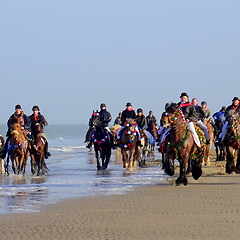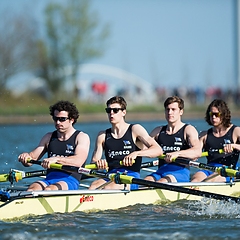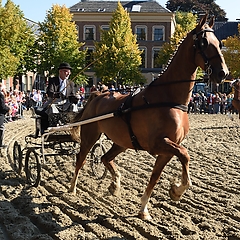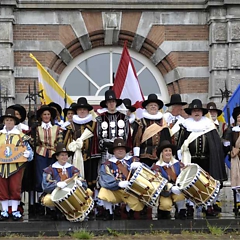The Short Track Harness Race is an annual race in July on the Kruisweg in the centre of Hoofddorp. The public comes not only for the exciting races, which are free to enter, but also for the conviviality with each other, a nice drink and for some to make a bet. There is a lot of conviviality and togetherness among young and old during the event. Various types of entertainment are organised too, for during the breaks.A special part of the short track harness race in Hoofddorp is the blessing of the horses by the priest of the St. John the Baptist Church.
On the evening before the race, for the group of sponsors who qualify, the lots are drawn at Hotel De Beurs. A draw takes place to determine which sponsors are allocated a horse.A short track harness race is a knock-out race between a maximum of 24 horses, held on a sand-covered street. The track has a maximum length of 310 metres and is fenced off with crowd barriers. For the race a starting and finishing system and a sound system are used to announce the results to the public. Cash and honour prizes will be available for the six best-placed horses.After the final, the horse and driver are honoured on the track, after which the official prize-giving ceremony takes place in Hotel De Beurs. The sponsors of the first four horses to arrive will receive a gift.
Betting on horses is a fixed part of the short track. The amount won depends on the stakes, the total stakes and the number of people who have made the same bet. Nowadays animal welfare is important, there is a heat protocol, a veterinarian examines the horses, and it is visible to the public that the horses are treated respectfully. In 2019, the Short Track Harness Race Hoofddorp has started to pay attention to sustainability, on the race day, among other things, green electricity was used from the St. John the Baptist Church.



